Related Research Articles

Elizabeth Woodville, later known as Dame Elizabeth Grey, was Queen of England from her marriage to King Edward IV on 1 May 1464 until Edward was deposed on 3 October 1470, and again from Edward's resumption of the throne on 11 April 1471 until his death on 9 April 1483. She was a key figure in the Wars of the Roses, a dynastic civil war between the Lancastrian and the Yorkist factions between 1455 and 1487.
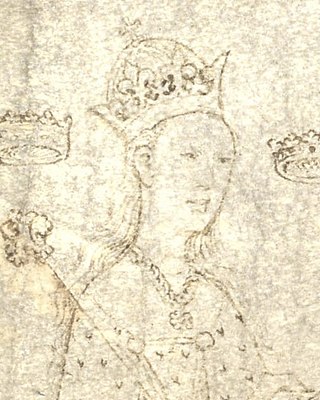
Anne Neville was Queen of England as the wife of King Richard III. She was the younger of the two daughters and co-heiresses of Richard Neville, 16th Earl of Warwick. Before her marriage to Richard, she had been Princess of Wales as the wife of Edward of Westminster, Prince of Wales, the only son and heir apparent of King Henry VI.

Joan Beaufort was the youngest of the four legitimised children and only daughter of John of Gaunt, 1st Duke of Lancaster, by his mistress, later wife, Katherine Swynford. She married Ralph de Neville, 1st Earl of Westmorland and in her widowhood became a powerful landowner in the north of England.

Anne de Mowbray, 8th Countess of Norfolk, later Duchess of York and Duchess of Norfolk was the child bride of Richard of Shrewsbury, Duke of York, one of the Princes in the Tower. She died at the age of eight.
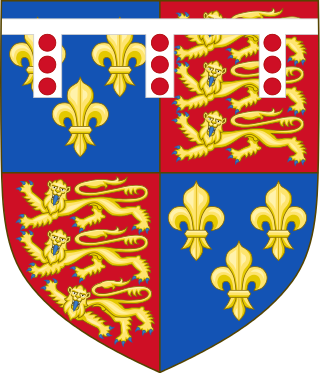
The House of York was a cadet branch of the English royal House of Plantagenet. Three of its members became kings of England in the late 15th century. The House of York descended in the male line from Edmund of Langley, 1st Duke of York, the fourth surviving son of Edward III. In time, it also represented Edward III's senior line, when an heir of York married the heiress-descendant of Lionel, Duke of Clarence, Edward III's second surviving son. It is based on these descents that they claimed the English crown. Compared with its rival, the House of Lancaster, it had a superior claim to the throne of England according to cognatic primogeniture, but an inferior claim according to agnatic primogeniture. The reign of this dynasty ended with the death of Richard III of England at the Battle of Bosworth Field in 1485. It became extinct in the male line with the death of Edward Plantagenet, 17th Earl of Warwick, in 1499.

Cecily Neville was an English noblewoman, the wife of Richard, Duke of York (1411–1460), and the mother of two kings of England—Edward IV and Richard III. Cecily Neville was known as "the Rose of Raby", because she was born at Raby Castle in Durham, and "Proud Cis", because of her pride and a temper that went with it, although she was also known for her piety. She herself signed her name "Cecylle".
Thomas Grey, 1st Marquess of Dorset, 1st Earl of Huntingdon, 7th Baron Ferrers of Groby, was an English nobleman, courtier and the eldest son of Elizabeth Woodville and her first husband Sir John Grey of Groby. Her second marriage to King Edward IV made her Queen of England, thus elevating Grey's status at court and in the realm as the stepson of the King. Through his mother's endeavours, he made two materially advantageous marriages to wealthy heiresses, the King's niece Anne Holland and the King’s cousin, Cecily Bonville, 7th Baroness Harington. By the latter, he had 14 children.
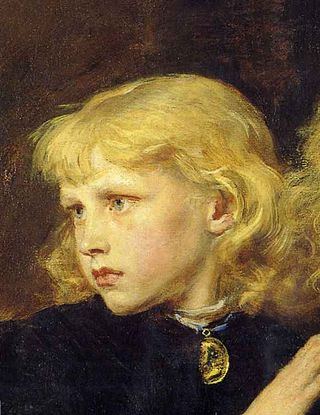
Richard of Shrewsbury, Duke of York, was the sixth child and second son of King Edward IV of England and Elizabeth Woodville, born in Shrewsbury. Richard and his older brother, who briefly reigned as King Edward V of England, mysteriously disappeared shortly after their uncle Richard III became king in 1483.
Humphrey Stafford, generally known by his courtesy title of Earl of Stafford, was the eldest son of Humphrey Stafford, 1st Duke of Buckingham and Lady Anne Neville.

George Manners, 11th Baron de Ros of Helmsley was an English peer.

Thomas Manners, 1st Earl of Rutland, 12th Baron de Ros of Helmsley, KG, of Belvoir Castle in Leicestershire, was created Earl of Rutland by King Henry VIII in 1525.
Anne of York, was the fifth daughter of King Edward IV of England and his queen consort Elizabeth Woodville.
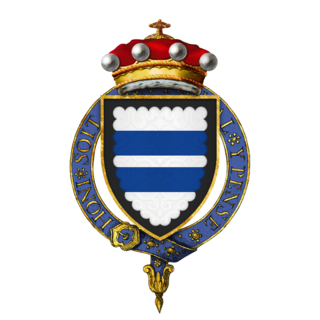
Sir William Parr, KG (1434–1483) was an English courtier and soldier. He was the eldest son of Sir Thomas Parr (1405–1461) and his wife Alice, daughter of Sir Thomas Tunstall of Thurland, Lancashire.

Anne of York, Duchess of Exeter, aka Anne Plantagenet, was the first child of Richard Plantagenet, 3rd Duke of York, and Cecily Neville. She was thus the eldest sister of kings Edward IV (1461–1483) and Richard III (1483–1485) and their siblings Edmund, Earl of Rutland; Elizabeth of York, Duchess of Suffolk; Margaret, Duchess of Burgundy; and George Plantagenet, 1st Duke of Clarence.
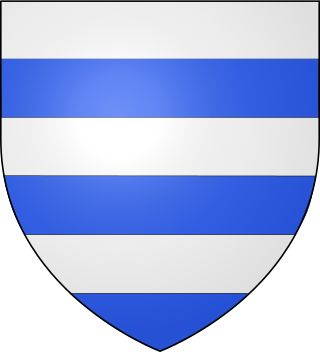
Sir John Grey, of Groby, Leicestershire was a Lancastrian knight, the first husband of Elizabeth Woodville who later married King Edward IV of England, and great-great-grandfather of Lady Jane Grey.

Thomas Grey, 2nd Marquess of Dorset was an English peer, courtier, soldier and landowner of the House of Grey.

Elizabeth Tilney, Countess of Surrey was an English heiress who became the first wife of Thomas Howard, 2nd Duke of Norfolk. She served successively as a lady-in-waiting to two Queen consorts, namely Elizabeth Woodville, wife of King Edward IV, and later as Lady of the Bedchamber to that Queen's daughter, Elizabeth of York, the wife of King Henry VII. She stood as joint godmother to Princess Margaret Tudor at her baptism.

Sir Thomas St LegerKB was the second son of Sir John St Leger (d.1441) of Ulcombe, Kent, and his wife, Margery Donnet. He was also the second husband of Anne of York, daughter of Richard Plantagenet, 3rd Duke of York and thus she was an elder sister of Kings Edward IV (1461–1483) and Richard III (1483–1485). His younger brother, Sir James St Leger of Annery in Devon, married Anne Butler, daughter of Thomas Butler, 7th Earl of Ormond, and was, therefore, an uncle to Thomas Boleyn, 1st Earl of Wiltshire.
Anne Woodville, Viscountess Bourchier was an English noblewoman. She was a younger sister of Queen Consort Elizabeth Woodville to whom she served as a lady-in-waiting. Anne was married twice; first to William Bourchier, Viscount Bourchier, and secondly to George Grey, 2nd Earl of Kent. Anne was the grandmother of the disinherited adulteress Anne Bourchier, 7th Baroness Bourchier, and an ancestress of Robert Devereux, 2nd Earl of Essex.

St George's Chapel at Windsor Castle in England is a castle chapel built in the late-medieval Perpendicular Gothic style. It is a Royal Peculiar, and the Chapel of the Order of the Garter. St George's Chapel was founded in the 14th century by King Edward III and extensively enlarged in the late 15th century. It is located in the Lower Ward of the castle.
References
- 1 2 Ross, Charles Derek (1974). Edward IV. University of California Press. ISBN 978-0520027817.
- ↑ Jones, Michael K.; Underwood, Malcolm G. (1993). The King's Mother: Lady Margaret Beaufort, Countess of Richmond and Derby. Cambridge University Press. ISBN 978-0521447942.
- 1 2 Richardson, Douglas (2005). Magna Carta Ancestry: A Study in Colonial and Medieval Families. Genealogical Publishing Company. ISBN 978-0806317595.
- ↑ Cokayne, George Edward (1949). The Complete Peerage.